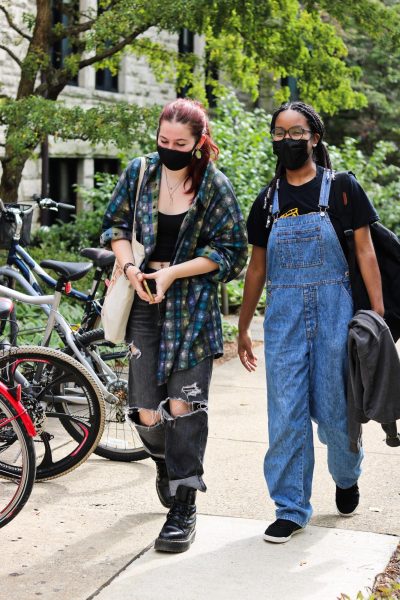Republican Critiques of Student Loan Relief Lack Merit
On Aug. 24, President Biden announced his three step plan for student loan relief, fulfilling his promise to cancel $10,000 of student debt for low to middle income borrowers. Biden believes higher education is a main gateway to the middle class, but explains that the cost of borrowing has deprived people of this opportunity for social mobility. Considering the effects of the pandemic, the demand to expand social mobility has only further increased. Today, there is no doubt that Biden’s plan will help give breathing room to those struggling to financially recover from the cost of their education and bring many people a significant step closer to the middle class.
To be specific, the first part of Biden’s plan will target debt relief that will help address the financial harms of the pandemic. Those who are borrowers with an individual income of less than $125,000, or $250,000 for married couples, are eligible to receive relief. Through the Department of Education, students who received Pell Grants, federal financial aid that does not need to be repaid, can receive up to $20,000 in debt cancellation, and non-Pell Grant recipients can receive up to $10,000. The second part of the plan consists of making the current student loan system easier to navigate and more manageable by cutting monthly payments in half for undergraduate loans, fixing the Public Service Loan Forgiveness, and the proposal by the Department of Education for a new income-driven repayment plan that provides protection from making any payments for low-income borrowers, as well as capping monthly payments for undergraduate loans at five percent. Finally, the plan will reportedly hold colleges accountable for tuition increases and protect future students and taxpayers from unaffordable prices.
Even those who wish Biden’s plan would have given larger amounts of relief acknowledge that it is effectively addressing real and significant needs. According to estimates made by the the Department of Education, nearly 90 percent of relief dollars will go to those earning less than $75,000 per year. The plan could also help advance racial equity, given that Black students are likely to have to borrow and take out larger loans, and receive Pell Grants at a much higher rate compared to their white peers. Finally, the plan will make a difference in the real estate market, given the number of potential homebuyers who have reported through numerous surveys that student loan debt of less than $20,000 was the barrier to purchasing a home.
Even with these significant benefits, it’s relatively clear that there’s a politically self-serving component to this plan, especially with its roll out coming right before the midterms. While Democrats worry about losing the congressional majority, motivating turnout for the midterms is crucial. Politicians have been strategically unveiling and advancing programs in their most strenuous moments of political necessity for years. But even if this policy shows that the Biden administration is acting in its own self interest, the good that is coming from the politicization of student debt relief somewhat justifies the cause.
Ironically, the same can’t be said on the other side of the aisle. When you analyze Republican critiques of the student debt relief plan, their logic falls apart. The arguments reveal inconsistency and the facts are manipulated, all revealing a response that is entirely motivated by political gain.
One of the major critiques of the plan is that it’s simply unfair. Mitch McConnell voiced this by calling the plan “socialist” and saying it’s “a slap in the face to every family who sacrificed to save for college, every graduate who paid their debt, and every American who chose a certain career path or volunteered to serve in our Armed Forces in order to avoid taking on debt.” Essentially what McConnell is arguing is that if the program can’t benefit everyone, it might as well not exist — a position in complete opposition to progress. It’s not a mark of treason that many government programs were not intended to help every group — it’s in the nature of governmental legislation. Money may go to different programs that do not directly benefit every American, but in no way does that mean we should cease to provide these programs if we can afford the immediate cost.
A critique that has been paired with the one above is that loan relief is going to those who don’t need it. The hypocrisy of this is stunning. Speaking against student loan forgiveness, Congresswoman Majorie Taylor Greene said, “For our government just to say okay your debt is completely forgiven. Well obviously they have an agenda for that, they need votes in November so the timing is pure coincidence there as well, but it’s completely unfair.” However, as the White House pointed out on Twitter, Greene had $183,504 in COVID-19 relief loans forgiven through the Paycheck Protection Program. When these loans were forgiven, even for companies with huge assets and executives making millions a year, no complaints were offered by the GOP about unfairness and the undeserving rich.
Besides the hypocrisy, the claim that these loans are going to undeserving wealthy individuals is blatantly false. By framing the relief as such, Republicans are knowingly leaving out the fact that, as stated above, the majority of federal student loan forgiveness — 90 percent — will be given to people who make $75,000 a year or less.
With inflation being a major concern, we also hear the claim that this relief plan will only increase inflation. In actuality, this plan will have only a relatively small impact on inflation, if any at all. Goldman Sachs did a preliminary analysis of its impacts and found that debt payments as a percentage of income will fall by 0.1 percent.
So where does all of this leave us? While it is undeniably true that, like most political initiatives, this relief program is influenced by the Biden administration’s motivation for political gain, the GOP’s response has had little logical merit outside of partisanship. In the end, this is just another reminder of just how divided Americans are and how facts are cast aside for political gain. It’s also a frightening reminder that if we don’t disregard our political differences, we will never reap the benefits of the other side’s merit.




